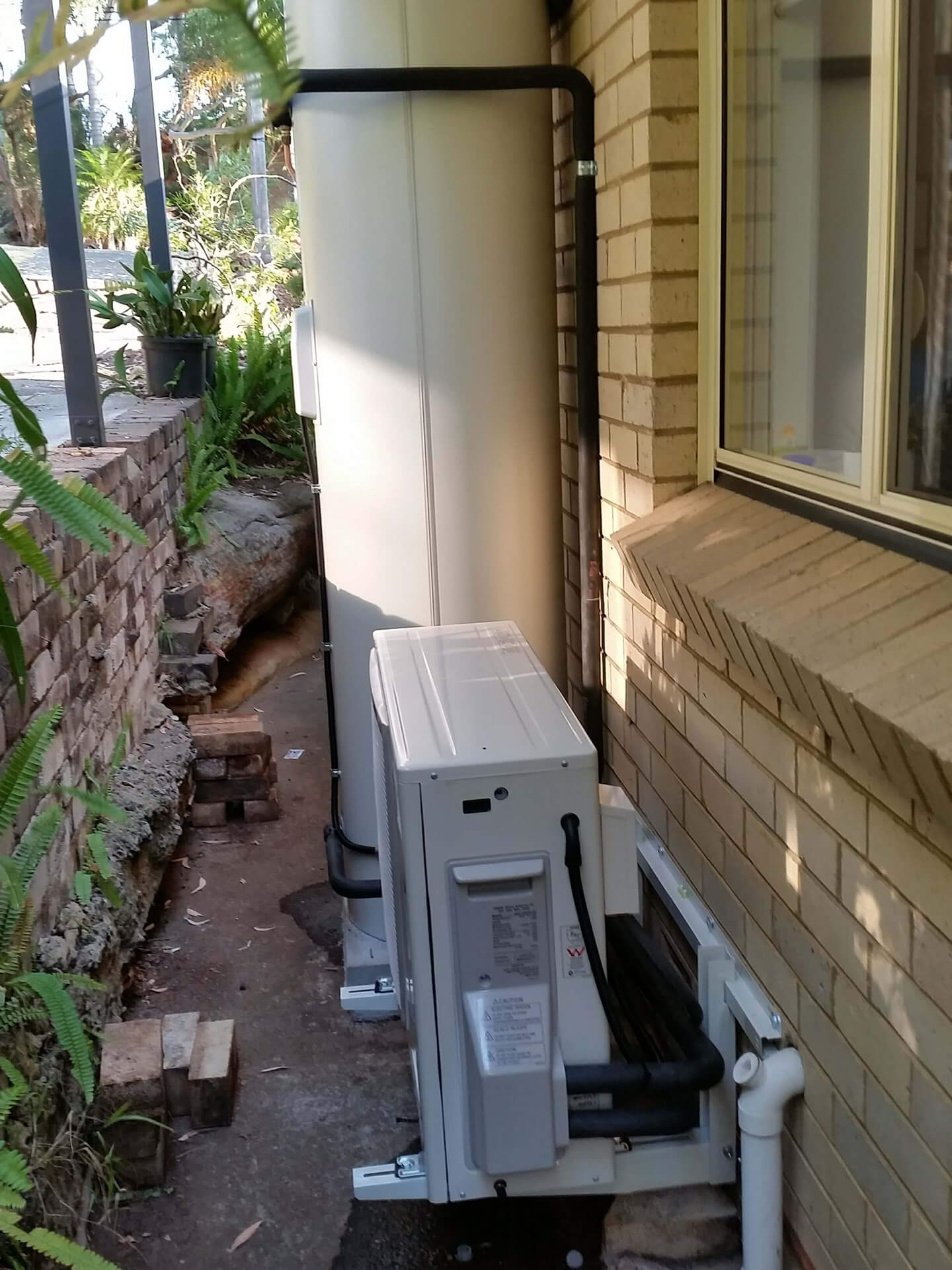As part of installing solar earlier this year I had to decide what to do about hot water. The existing conventional electric hot water tank was 13 years old and badly rusted, so although it was functioning fine it was approaching the end of its life. What should I replace it with? Solar hot water? A heat pump? A PV diverter? Or just leave it?
In the end I decided to install a heat pump. The reasons are described here.
Background
- We run a fairly efficient home. Everything is electric – no gas. We used about 14 kWh per day averaged over the year. Of that, the electric hot water was about 5.5 kWh per day on average.
- The hot water was on an off-peak tariff (Ausgrid Controlled Load 2). So it heated up overnight.
- The tank was 315 litres. With two adults and two young kids we have never run out of hot water.
- The tank had a single 4.8kW element. This draws a lot of electricity when its on.
- Sunny roof space is very limited, and virtually zero in winter, as explained in my earlier article How I justified getting solar on a partially-shaded roof
My motivations are primarily environmental so I was keen to chose the option that results in the lowest environmental impact overall. The options I considered were:
Solar hot water
Pros of solar hot water:
- reliable (on the whole), tried-and-tested solution
- simple. nothing to manage, monitor or optimise (although this is not entirely true, see note about the booster below)
- fairly low environmental impact to manufacture (I’m assuming, since it has no electronics or fancy materials)
- good environmental benefit – uses about 75% less energy than regular hot water (see below)
The problems with solar hot water, in our situation:
- I worked out that a system with a tank and two panels would take up as much space as 4 to 6 PV panels on the roof. This equates to nearly 2kW of PV (6 x 330W panels). Since sunny roof space is limited that would mean getting a 3.5kW PV system instead of the 5.3kW we ended up getting.
- Once the water is hot the sun hitting the panels is wasted – it can’t be used for anything useful. Contrast to PV panels, which always generate useful energy, either used onsite or exported to the grid to displace dirty coal-fired power.
- Needs boosting. Solar hot water provides about 75% of hot water heating with the sun, less in my case as my roof faces west and suffers from almost total shading in winter. The remaining 25% (more in my case) is heated using the booster element, which is a resistive element like the old system.
- The boosting can’t be done with PV power: it would make no sense to operate the booster element when the sun was shining! So boosting would be done with grid power.
- The booster must be connected to continuous tariff, not off peak, from what I’ve read. It is typically installed on a timer so it can run at the optimal time.
If I installed solar hot water I would:
- forgo about 6 or 7 kWh per day that the extra 2kW of PV panels would produce
- consume around 2 kWh per day (estimated) to run the booster (more in winter, less in summer), which must be imported from the grid
Conventional hot water with PV diverter
A PV diverter is a device which automatically diverts excess solar power, which would otherwise be exported to the grid, to the hot water system. They are able to deliver less power than the hot water element would usually draw, eg if your hot water has a 4.8kW element but you are currently exporting 2kW excess solar, the diverter will send only 2kW to the hot water, which is cool. You can read more about them here.
Pros:
- simple. nothing to manage
- should be reliable (assuming the PV diverter device is reliable). No moving parts, just power electronics.
- cheaper than the other options (say $1300 for a conventional tank plus $1000 for the diverter)
- doesn’t take up any roof space
Cons:
- doesn’t harvest any renewable energy nor save any energy – no environmental benefit (unless you consider lowering the load on the grid an environmental benefit, which it is because less resources are required on the grid, but it’s less obvious)
Heat pump hot water
A heat pump hot water transfers heat from the air into the water. It uses electricity to do this, but uses much less energy than regular hot water to generate the same amount of heat. The Sanden unit I had installed claims to use 80% less energy, but let’s say 75%. In our case it should use about 1.5 kWh per day on average.
Pros:
- environmental benefit: gets 75% of the energy from the air (this is why a heat pump earns STC certificates, just like a solar PV system)
- doesn’t take up any roof space, meaning I can get more PV
- draws about 1kW when operating, so very easy to power with solar without importing from the grid.
Cons:
- not cheap (although no more than solar hot water). $4000 to $5000 for the Sanden unit, which seems to be top-of-the-line. Other brands may be had from as low as $2500.
- less reliable. A heat pump is like an aircon unit with a water pump. It has quite a few moving parts and some electronics. My friends have a cheaper brand and have had several problems with it over the years. Not that a single data point should be used to draw a conclusion, but it’s reasonable to assume a heat pump will be less reliable than conventional hot water, and probably less reliable than a quality solar hot water system.
- noise. Like aircons, the compressor makes a noise which may be an issue.
Analysis
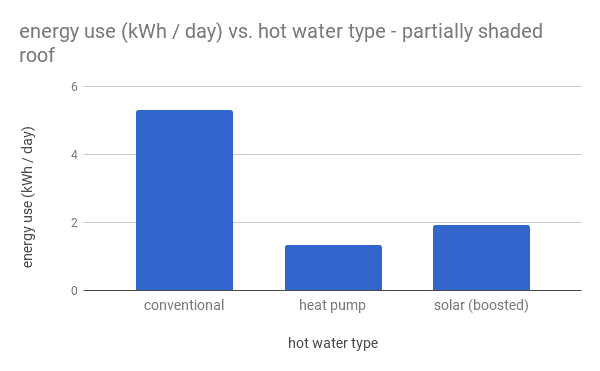
Surprisingly, solar hot water would almost certainly use more electricity than a heat pump because of the need to operate the booster, especially during winter when my roof is almost totally shaded.
When we factor in the impact of having a smaller PV array to make space for solar hot water panels on the roof, the picture becomes clear:
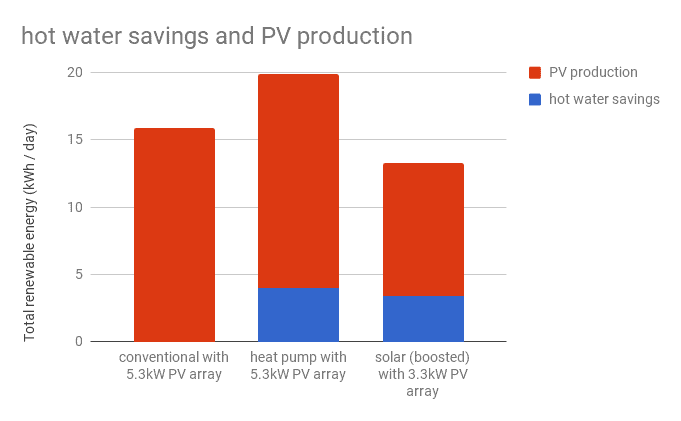
From an environmental perspective the heat pump is clearly the best option. The solar hot water is the worst because the loss of PV generation due to the limited roof space is much greater than the energy saved by the solar hot water. I’d be better off sticking with the conventional hot water and getting a larger PV system.
Decision
In the end I decided on the heat pump.
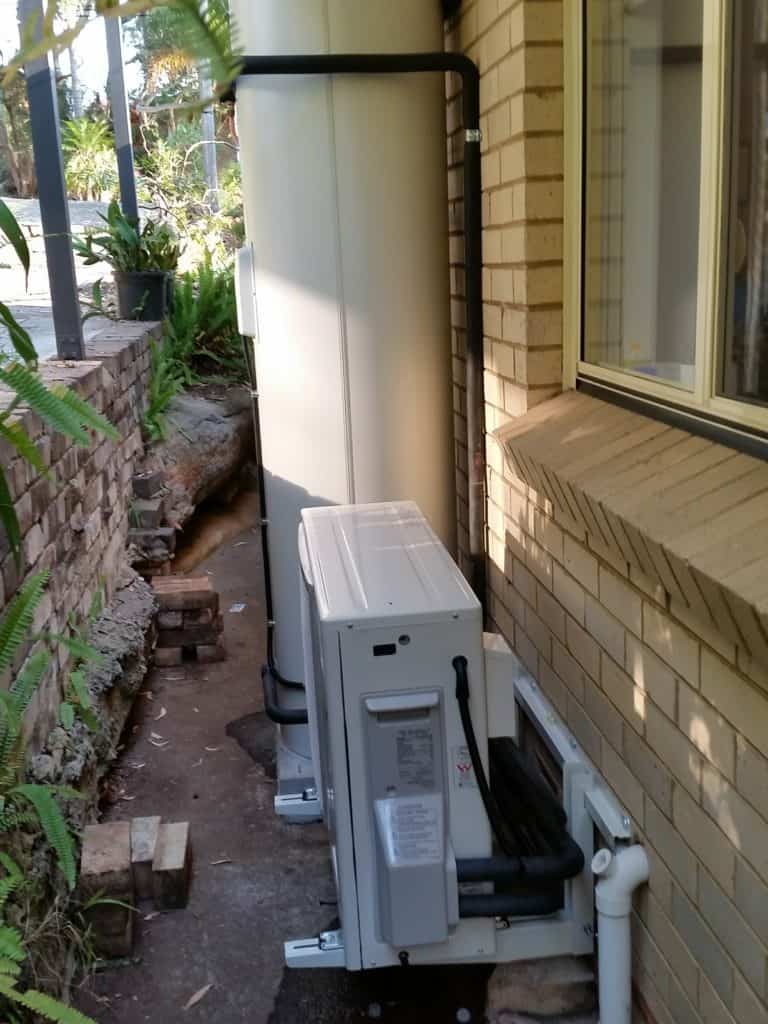
In terms of noise, one reason we went with the Sanden is because it claims to be very quiet, and I can confirm that it is. It’s much quieter even than my new Daiken split system, which itself is very quiet. The compressor is mounted directly under our kitchen window. When the window is wide open we can just hear the compressor running. I’m sure our neighbours would never hear it, despite it being a few meters from their living room. In addition, because it runs during the day so it can be powered by solar the small amount of noise it makes is not noticed.
Hopefully it will be reliable enough. No matter how good the quality is I think it’s reasonable to expect it to be less reliable than conventional hot water, which has no moving parts. For such good performance, I’d be willing to tolerate an occasional issue. But not too often – nobody likes a cold shower!
I have no way to measure its power use directly, but looking at my whole-house consumption monitoring suggests it’s drawing about 1kW for about 1 to 2 hours per day. This is in line with my expectations.
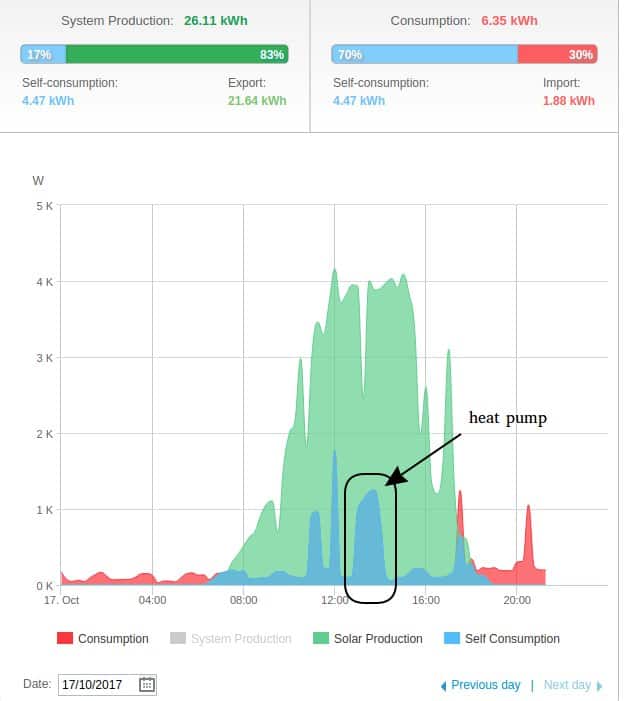
The heat pump has an integrated timer which allows “blocking out” times when it’s not allowed to run. I’ve got mine set so it can run between 1pm and 6pm each day. It comes on at 1pm every day and runs for 1 to 2 hours. On most days it is easily powered entirely by the solar, as shown in the monitoring screenshot. Even on cloudy days it’s mostly powered by solar because it only draws 1kW.
Contrast this the old conventional hot water, which pulled 4.8kW and was coming on on-demand (the off-peak was disabled at my request when my meter was upgraded, in anticipation of getting a heat pump):
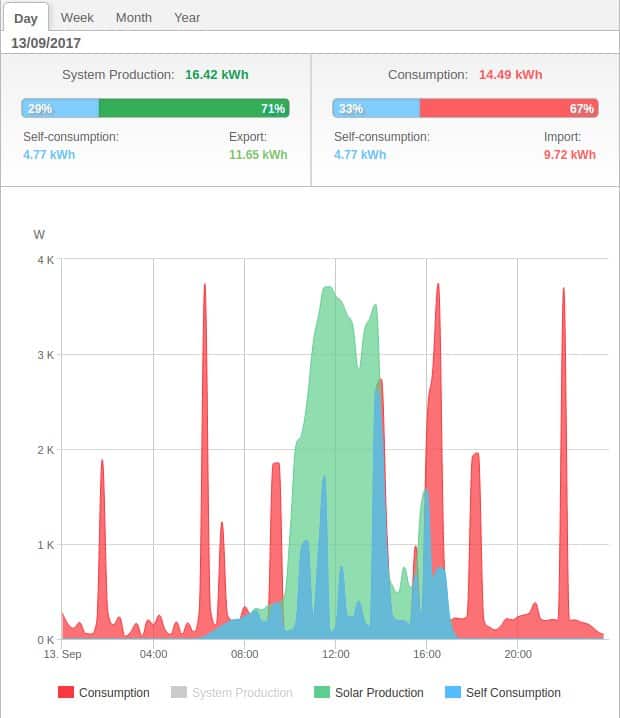
Rather difficult to power the old hot water system with solar!

